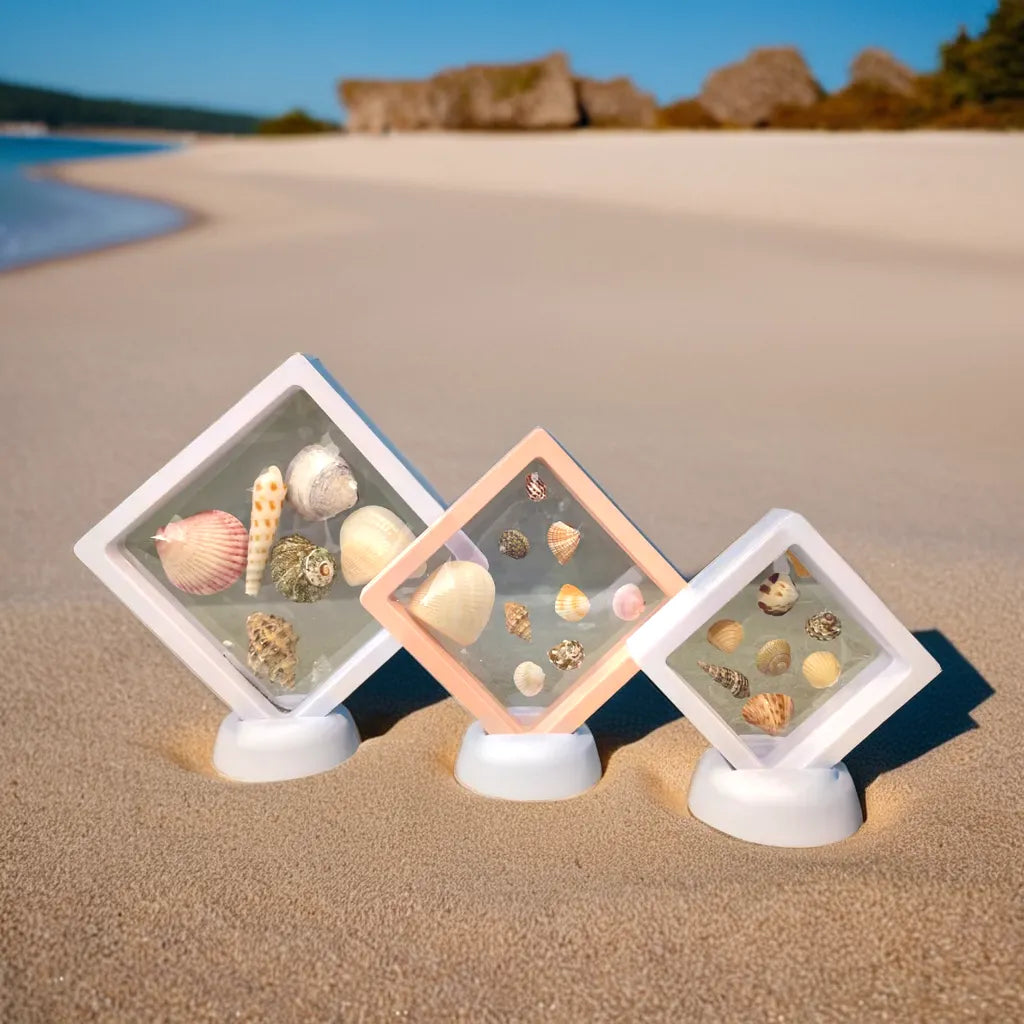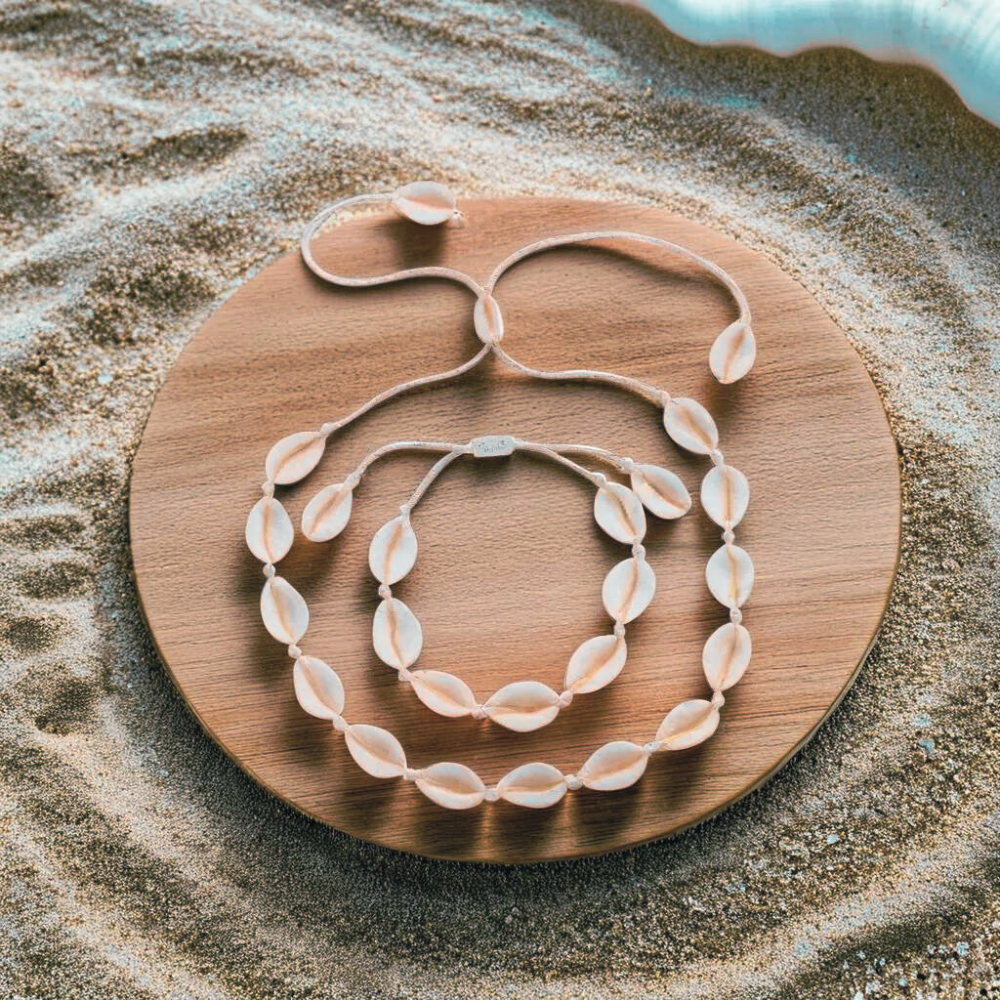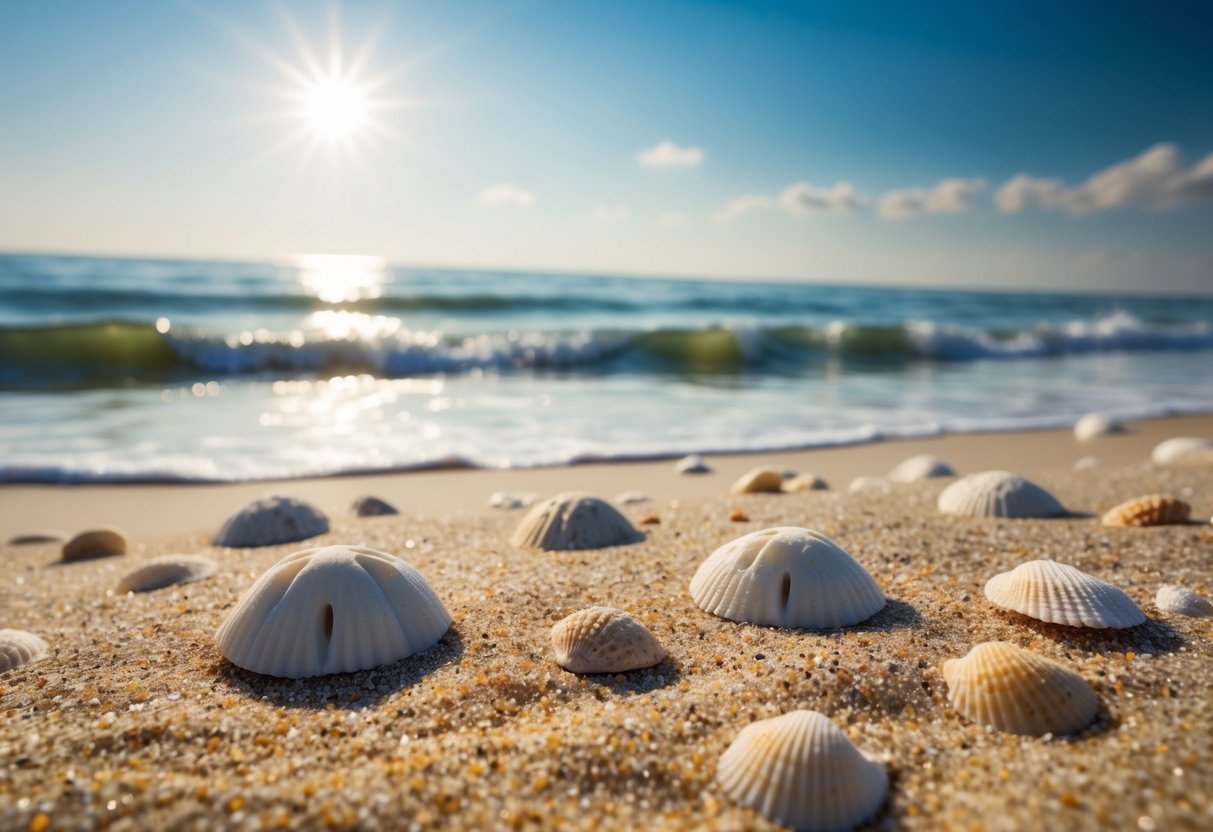Sand dollars are remarkable sea creatures that often capture the attention of beachgoers with their unique shape and charming patterns. These fascinating animals are not just beautiful; they play important roles in their ecosystems and have intriguing biological traits. Many people may only know them as the flat, bleached discs found on shorelines, but they truly have a hidden life that is quite different from their skeletons.
 When alive, sand dollars boast a purple, hairy exterior that is far from the smooth shells most are familiar with. This living stage plays a critical role in their survival and in maintaining the health of marine environments. Their feeding habits, unique adaptations, and ecological importance provide a wealth of interesting aspects for anyone eager to learn more about these creatures.
From their historical significance to the threats they face today, sand dollars offer a treasure trove of curiosities. Exploring these unusual facts will illustrate why they deserve attention beyond their beachside beauty.
When alive, sand dollars boast a purple, hairy exterior that is far from the smooth shells most are familiar with. This living stage plays a critical role in their survival and in maintaining the health of marine environments. Their feeding habits, unique adaptations, and ecological importance provide a wealth of interesting aspects for anyone eager to learn more about these creatures.
From their historical significance to the threats they face today, sand dollars offer a treasure trove of curiosities. Exploring these unusual facts will illustrate why they deserve attention beyond their beachside beauty.
 Sand dollars are unique marine animals known for their flat bodies and distinct skeletons. They belong to a group called echinoids and possess fascinating adaptations for survival in sandy ocean environments. Their biology includes interesting aspects of anatomy, species diversity, and reproductive methods.
Sand dollars are unique marine animals known for their flat bodies and distinct skeletons. They belong to a group called echinoids and possess fascinating adaptations for survival in sandy ocean environments. Their biology includes interesting aspects of anatomy, species diversity, and reproductive methods.
 Sand dollars play a vital part in their marine environments. They contribute to nutrient cycling, sediment stabilization, and support other marine life. Understanding their role helps appreciate their importance in healthy ecosystems.
Sand dollars play a vital part in their marine environments. They contribute to nutrient cycling, sediment stabilization, and support other marine life. Understanding their role helps appreciate their importance in healthy ecosystems.
Choose low tide periods for the best chance of finding sand dollars. They are often exposed on the beach during these times. 2. Where to Look
Look in sandy areas near the shoreline. Shallow, clear waters are often good spots. South Florida and the Florida Keys are known for sandy beaches with sand dollars. 3. Handling Tips
If collected, clean sand dollars gently. Use fresh water and a soft brush. 5. Legal Considerations
Check local regulations about collecting sand dollars. Some areas may have restrictions to protect wildlife. Following these guidelines helps keep sand dollars safe and beautiful. Respecting this unique marine life is essential for future enjoyment.
 When alive, sand dollars boast a purple, hairy exterior that is far from the smooth shells most are familiar with. This living stage plays a critical role in their survival and in maintaining the health of marine environments. Their feeding habits, unique adaptations, and ecological importance provide a wealth of interesting aspects for anyone eager to learn more about these creatures.
From their historical significance to the threats they face today, sand dollars offer a treasure trove of curiosities. Exploring these unusual facts will illustrate why they deserve attention beyond their beachside beauty.
When alive, sand dollars boast a purple, hairy exterior that is far from the smooth shells most are familiar with. This living stage plays a critical role in their survival and in maintaining the health of marine environments. Their feeding habits, unique adaptations, and ecological importance provide a wealth of interesting aspects for anyone eager to learn more about these creatures.
From their historical significance to the threats they face today, sand dollars offer a treasure trove of curiosities. Exploring these unusual facts will illustrate why they deserve attention beyond their beachside beauty.
Key Takeaways
- Sand dollars have unique biological traits that aid their survival.
- They play a key role in the health of marine ecosystems.
- Understanding their conservation status is crucial for their future.
The Biology of Sand Dollars
 Sand dollars are unique marine animals known for their flat bodies and distinct skeletons. They belong to a group called echinoids and possess fascinating adaptations for survival in sandy ocean environments. Their biology includes interesting aspects of anatomy, species diversity, and reproductive methods.
Sand dollars are unique marine animals known for their flat bodies and distinct skeletons. They belong to a group called echinoids and possess fascinating adaptations for survival in sandy ocean environments. Their biology includes interesting aspects of anatomy, species diversity, and reproductive methods.
Anatomy
Sand dollars have a flat, disc-like shape that helps them move through sand. Their hard outer skeleton, called a test, is made of calcium carbonate. This test is typically white or grayish-white and features a star-shaped pattern on its surface.- Tube Feet: These small, tube-like structures allow sand dollars to move and feed. They extend through tiny holes in their test and help to collect food particles.
- Sensory Cells: Sand dollars have sensory cells that detect changes in their environment. This ability helps them avoid predators and find food.
Species Diversity
There are around 200 species of sand dollars worldwide, with the most common being the Echinarachnius parma. These species are found mainly in shallow coastal waters but can also live in deeper ocean areas.- Habitat Variability: Different species adapt to varying environments, from tropical shores to cooler, temperate regions.
- Color Differences: Species may display different colors and sizes, adapting their appearance to their specific habitats.
Reproduction and Lifecycle
Sand dollars reproduce through a method known as broadcast spawning. During this process, both male and female sand dollars release eggs and sperm into the water at the same time. This increases the chances of successful fertilization.- Larval Stage: After fertilization, the eggs develop into larvae called pluteus, which float in the water for several weeks. They eventually settle on the ocean floor.
- Maturity: Sand dollars can take 1 to 2 years to reach maturity. Once mature, they can reproduce annually, contributing to their populations.
Ecological Role of Sand Dollars
 Sand dollars play a vital part in their marine environments. They contribute to nutrient cycling, sediment stabilization, and support other marine life. Understanding their role helps appreciate their importance in healthy ecosystems.
Sand dollars play a vital part in their marine environments. They contribute to nutrient cycling, sediment stabilization, and support other marine life. Understanding their role helps appreciate their importance in healthy ecosystems.
Habitat and Distribution
Sand dollars are commonly found in sandy or muddy ocean floors, particularly in shallow waters along coastlines. Their range includes the Atlantic, Pacific, and Indian Oceans. They often bury themselves just below the surface, which helps them avoid predators. The ideal habitat for sand dollars includes:- Sandy beaches: where they can easily dig into the substrate.
- Estuaries: where they benefit from nutrient-rich waters.
- Coral reefs: providing shelter and feeding opportunities.
Diet and Predation
Sand dollars primarily feed on organic matter, including tiny particles and microorganisms. They use their tube feet and cilia to collect food from the surface of the ocean floor. This feeding behavior plays a crucial role in the breakdown of organic material, thus recycling nutrients back into the marine ecosystem. Their predators include:- Starfish: which can easily prey on sand dollars.
- Fish: certain species may munch on them.
- Crabs: and other bottom-dwelling creatures that can dig them out.
Symbiotic Relationships
Sand dollars form symbiotic relationships with other marine organisms, contributing to ecosystem balance. They interact with various benthic organisms that thrive in the same habitats. By living close to other species, sand dollars help promote biological diversity. Some creatures benefit from sand dollars directly, such as:- Small crabs: that may take refuge among them.
- Marine algae: that grow on their shells, creating microhabitats.
Historical and Cultural Significance
Sand dollars have held a particular place in history and culture, often symbolizing deeper meanings and creativity. Their unique appearance and connection to the ocean have made them significant across various cultures.Symbolism and Mythology
Sand dollars are rich in symbolism and mythology. In Christian folklore, the markings on a sand dollar’s shell are seen as symbols of the crucifixion of Jesus. Each mark represents a different aspect of the story, such as the five wounds from the nails and the points of the star, symbolizing hope and redemption. Native American cultures also regard sand dollars as symbols of transformation and resilience. Finding a sand dollar can be viewed as a sign of good luck or a reminder to maintain hope. This appreciation for sand dollars extends into art and literature, where they serve as metaphors for beauty and spiritual growth.Use in Jewelry and Decor
The beauty of sand dollars has led to their popularity in jewelry and home decor. Craftspeople often use these shells to create necklaces, bracelets, and decorative accents. Their flat shape allows them to be easily incorporated into designs. Decorators also favor sand dollars for coastal-themed home decor. They are often seen in picture frames, shadow boxes, or as part of centerpieces. Collectors cherish them, making them sought-after items at beach boutiques and craft fairs. The versatile nature of sand dollars makes them not just visual art but also pieces of cultural heritage.Scientific Discoveries Related to Sand Dollars
Research on sand dollars has led to significant discoveries in areas like biomineralization and their classification within echinoids. Scientists study these animals for insights into marine ecosystems and their structure.Research on Biomineralization
Biomineralization is the process through which living organisms produce minerals. Sand dollars, specifically, show interesting features in their hard structures. The tests, or shells, of sand dollars are made of calcium carbonate. Researchers analyze how these creatures form their tests, which provides clues about environmental conditions. Studies show that the unique structure of sand dollar tests helps with strength and durability. This is crucial for their survival as they live in sandy environments. Understanding this process can help scientists learn about climate change effects on marine life.Clypeasteroid Echinoidea Studies
Clypeasteroid echinoids, which include sand dollars, are dear to marine biologists. They offer insights into evolutionary history and ecological roles. Recent studies focus on their reproductive behavior, like group spawning. This ensures higher success rates for offspring. Research has also looked at their interaction with predators. Sand dollars have few natural enemies, which helps maintain their populations. By examining their biology and behavior, researchers get a clearer picture of sand dollar habits. This understanding supports conservation efforts and habitat management in coastal areas.Conservation Status and Threats
Sand dollars face various threats that affect their populations. Environmental changes play a significant role in their survival. Key Threats Include:- Ocean Acidification: The increase in carbon dioxide makes ocean water more acidic. This can harm sand dollar growth and reproduction.
- Warming Oceans: Rising sea temperatures can affect habitats. It can lead to lower oxygen levels in the water, impacting sand dollar health.
- Habitat Loss: Coastal development and pollution can destroy their natural environments. This loss is crucial, as sand dollars depend on sandy beaches for survival.
Interesting Behaviors and Adaptations
Sand dollars display unique behaviors and adaptations that help them thrive in their marine environments. Their methods of movement and ability to camouflage are particularly fascinating.Locomotion
Sand dollars move using tiny tube feet located on their undersides. These feet operate like suction cups, allowing them to grip the sand and navigate. While they are not fast swimmers, they can adjust their position in the sand to find food or escape predators. Movement Modes:- Burrowing: Sand dollars can bury themselves in the substrate to avoid threats.
- Gliding: They can glide on the sand using their tube feet in gentle currents.
Camouflage and Defense
Camouflage is an essential adaptation for sand dollars. Their color helps them blend into the sandy ocean floor, making them less visible to predators. When disturbed, they can quickly bury themselves to enhance their safety. Defense Mechanisms:- Burrowing Quickly: Sand dollars can rapidly dig into the sand when they sense danger.
- Rigid Shells: Their hard, flat bodies provide protection against some predators.
Collecting and Handling Guidelines
When collecting sand dollars, care is important. These creatures have delicate shells that can break easily. Following some simple guidelines can help preserve these marine treasures. 1. When to CollectChoose low tide periods for the best chance of finding sand dollars. They are often exposed on the beach during these times. 2. Where to Look
Look in sandy areas near the shoreline. Shallow, clear waters are often good spots. South Florida and the Florida Keys are known for sandy beaches with sand dollars. 3. Handling Tips
- Be Gentle: Always handle sand dollars with care to avoid cracking the shell.
- Limit Pressure: Do not apply too much force when picking them up.
- Keep Dry: Avoid letting sand dollars sit in water for extended periods. This can weaken their shells.
If collected, clean sand dollars gently. Use fresh water and a soft brush. 5. Legal Considerations
Check local regulations about collecting sand dollars. Some areas may have restrictions to protect wildlife. Following these guidelines helps keep sand dollars safe and beautiful. Respecting this unique marine life is essential for future enjoyment.































